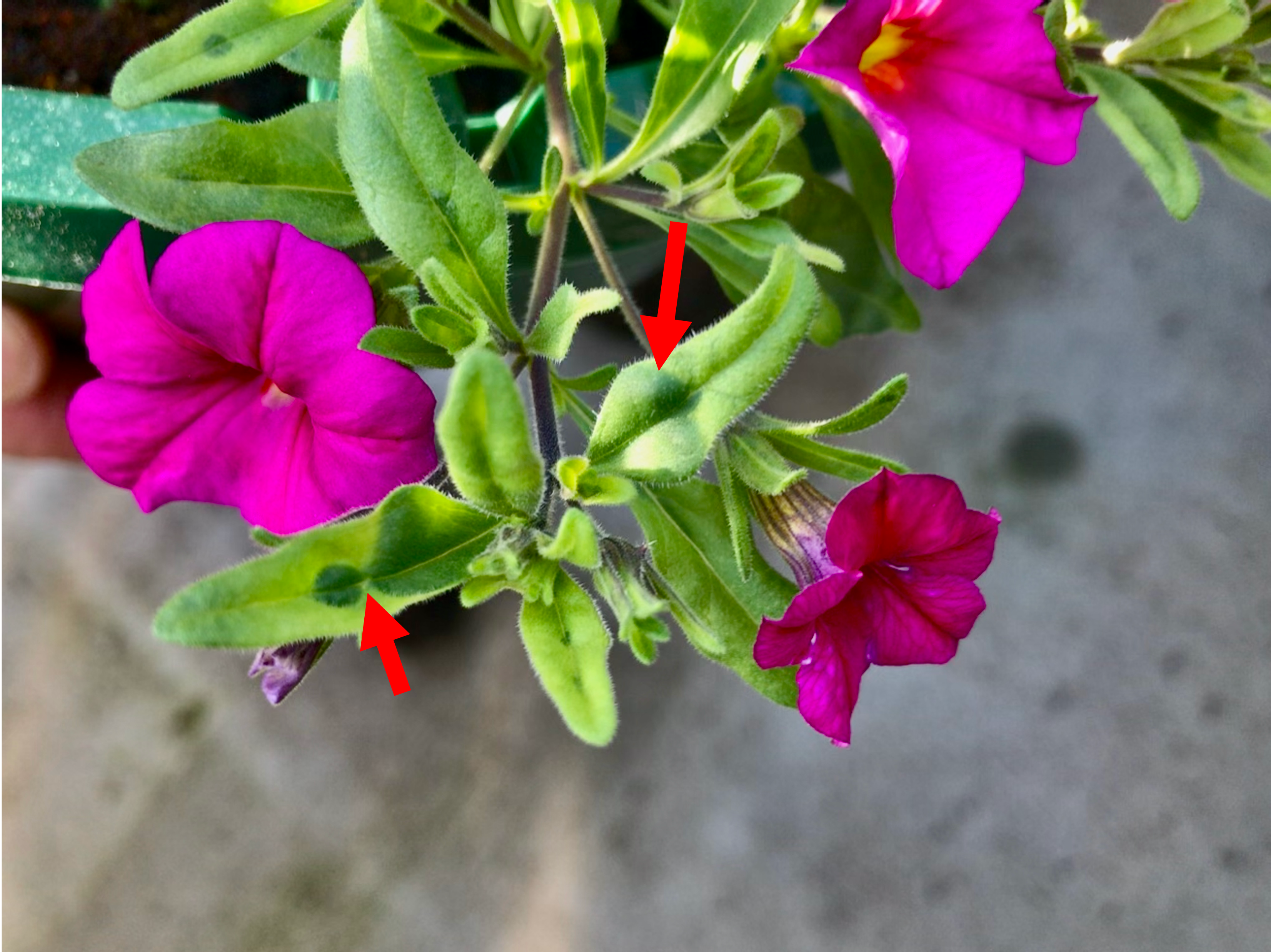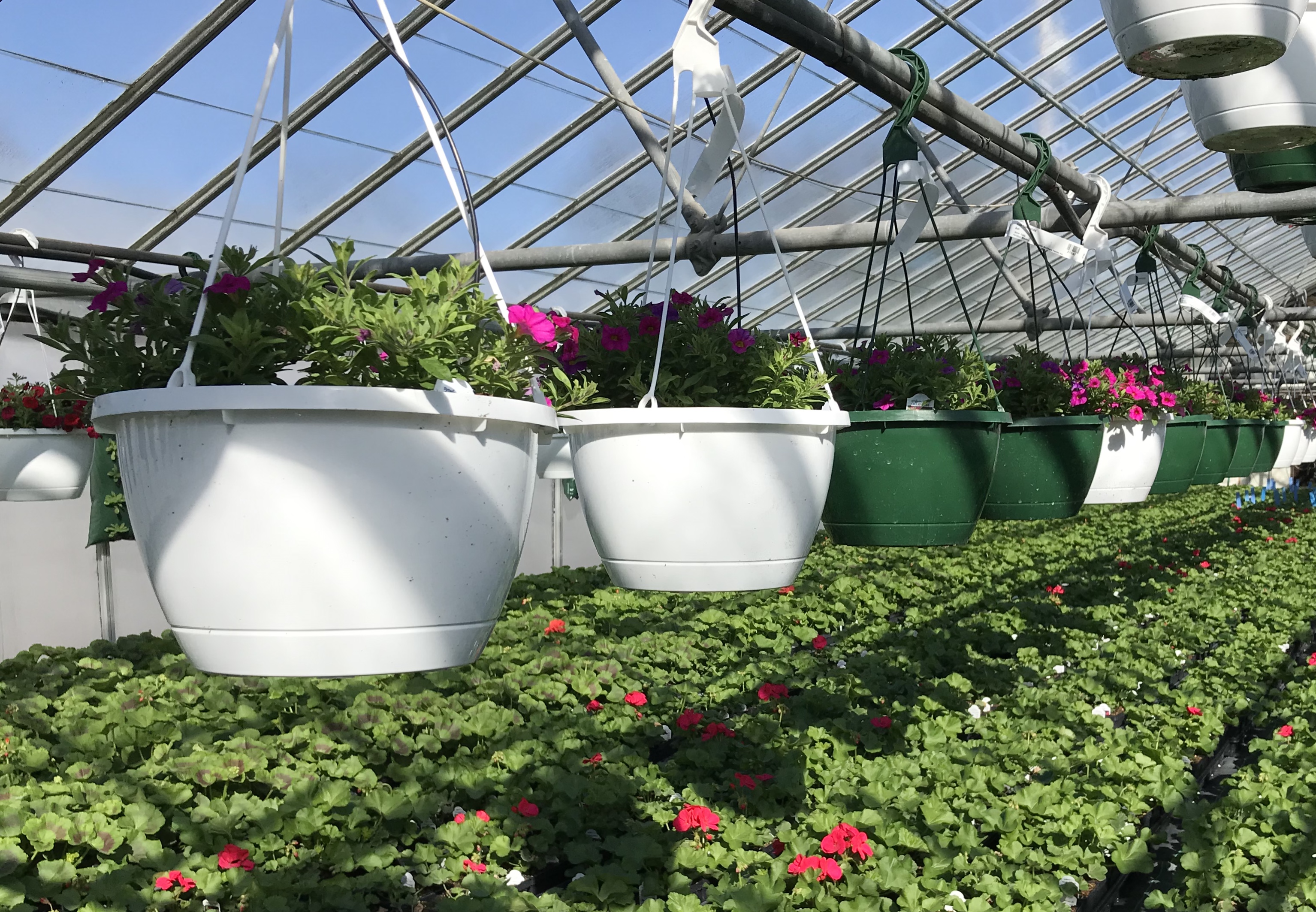Scout, rogue and repeat to reduce the spread of chili pepper mild mottle virus
Growers who have chili pepper mild mottle virus (CPMMoV), a viral plant disease, should scout their crops, test and rogue out the symptomatic plant material, and then sanitize for the best outcome.

Chili pepper mild mottle virus (CPMMoV) has been found in calibrachoas this season. Electronic Grower Resources Online (e-GRO) Alert 11.20 covered the symptoms, which include color breaks in flowers (unusual color patterns for a cultivar; Photo 1), mottling (Photo 2), dark green to brown lesions, and plant stunting (Photo 3). CPMMoV is a tobamovirus, like tobacco mosaic virus (TMV).
Similar to TMV, this virus is spread mechanically and is not vectored by common greenhouse insects such as western flower thrips. When there was an outbreak of TMV in the greenhouse industry in 2014, Michigan State University Extension developed an article, “Common questions and answers about tobacco mosaic virus,” which outlines many questions that are relevant to CPMMoV.


The host range of this virus is not well defined. It causes severe losses in peppers and can likely infect other solanaceous crops, including tomato, eggplant and petunia.
Michigan State University Extension recommends growers test symptomatic plants using TMV test strips, which have been shown to cross react with CPMMoV. A positive test result indicates that CPMMoV, or one of the related tobamoviruses is present and management steps must be implemented.
Growers need to establish a stringent protocol of scouting, testing plants, rouging out symptomatic plant material, and sanitizing to prevent further spread and losses. Here’s a step-by-step protocol that growers can follow:
- Scouting. Plan ahead and determine the path you’ll use to move through the greenhouse. As you move through the greenhouse, avoid touching other plant material, pots and greenhouse surfaces.
- Sampling. Each test kit has a prescribed amount of plant tissue needed for testing. More is not better, do not exceed the recommended amount of tissue per test.
- Composite samples. You can make composite samples, taking a small amount of leaf tissue from multiple plants, and grind them together for one test. This allows you to test more plant material per test strip. This method may be helpful in screening plant material that was adjacent to known infected material. But if the test is positive, you will need to do further individual testing to determine which plants are infected. If you use this method, be sure to tag or somehow mark the plants that you collect tissue from.
- Cross-contamination. Wear gloves when handling the plant material and change gloves between samples. This is important to avoid cross-contamination during testing. If gloves aren’t an option, thoroughly wash your hands with soap and water.
- Testing. Follow the instructions provided with the test kit. Note the amount of time the test strips should be allowed to “incubate” before evaluating the result. While a positive result may be visible quickly, the negative tests should be re-evaluated at the end of the incubation time.
- Rouge. Immediately and carefully dispose of plants that test positive. Place the entire pot containing the plant, tags, plant material, debris, growing media and gloves into trash bags. This process is tedious and is easily overwhelming as growers approach the peak shipping season. The person designated to carry out this task should not re-enter the production facility without first putting on a clean set of clothes
- Be thorough. It is not possible to sample and test every symptomatic plant, but once the virus is detected in a greenhouse all suspect plants should be disposed of.
- Risk management. Avoid hanging plants that are under observation for virus symptoms over other possible host plants. For example, hanging baskets containing calibrachoa should not be above petunias and peppers. Be watchful for symptomatic plants.
- Sanitation. Tobamoviruses are especially persistent on pots, drip lines, benches, floors and tools. Therefore, sanitation is essential as growers rogue out infected plant material prior to replacing it with new plants. Once all the symptomatic plants have been disposed of, disinfect drip tubes, benches and floor mats. Examples of disinfectant products are listed in the “Sanitation for Disease and Pest Management” (Table 1) from Purdue University Extension. Active ingredients include ethanol, quaternary ammonium, hydrogen dioxide and chlorine dioxide. Note: The chlorine from chlorine bleach can volatilize and cause plant phytotoxicity in a warm greenhouse.
- Grow on. This time of year, greenhouses are often packed wall to wall with spring crops to maximize profitability. New plant material should not be put in the greenhouse until testing, rogueing, and proper sanitation measures are completed. Growers should continue the best sanitation practices while moving among crops and greenhouses.
- Continue scouting. Diligence in scouting the crops in the greenhouses that contained infected plant material is critical. Test, rogue and repeat throughout the spring season for all plant species that were in the greenhouses with the diseased plant.
- Thorough cleaning. Once the season is completed, thoroughly sanitize the greenhouse areas where the infected plants had been placed to start fresh for next season.



 Print
Print Email
Email

